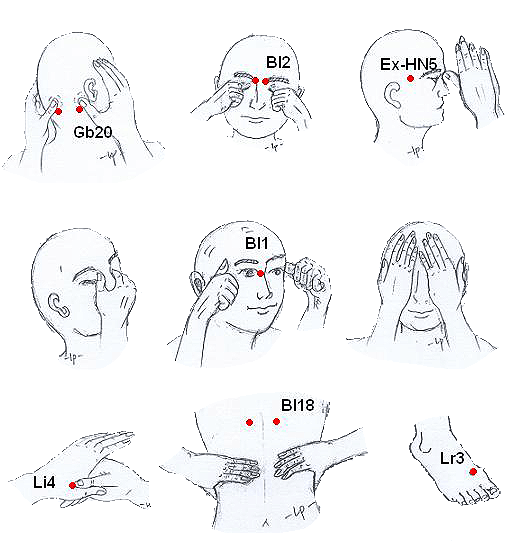
Acupressure is an ancient healing art developed in India over 5,000 years ago that uses the fingers to press key points on the surface of the skin to stimulate the body's natural self-curative abilities & for the healthy human body as they considered human body as the image of god where one could see his presence if it is in harmony. The word "Acu"is derived from latin language which means a very minute point.Hence these techniques stand for the therapeutic methods aimed to achieve cure by applying pressure at an acute point.Taking advantage of the modern development in scientific fields now the pressure is also applied with electric stimulation or by the electrodes.However the simplest & safest methods of stimilutaing the site is performed with fingers whihc press the particular points of the body to ease pains,tensions,fatigue & other symtoms of variuos diseases. In earlier times in ancient India this was also done with acupuncture as it was believed that peircing the ear lobes of young girls protects them from asthamatic disorders or piercing the nose was done to insure the fertility of the Female beings to for smooth flow of mensural cycles & good health.One of the important principle of Acupressure therapy is based upon purely a scientific basis : nerve ending of all small-big blood vessels & that of the nervous system lie at the base of the hand & feet.Hence the hands & feet have the control points of the entire human system. The whole human body is divided vertically & horizontally & they would correspond to the points in the hand & the palm which are know as reflex points. Acupressure reflex points are quite capable to find out the basic cause of the troubles or diseases in the body whre clinical tests might fail.Hense they are the mirror of the body ailments.these reflex points may differ from person to person slightly according the frame of body.Pressure is aplied by means of the physicans thumb, fingers or wooden objects on the reflex points moderately & whereever the patient feel the uncomfortable there the pressure point being defective may indicate health problems in the corresponding body parts.Human body is not only a unique machine but a store house o infinaite energy too.This energy is called pranicn energy or Bio-energy in the acu-parlance get dissipated everday owing to age & other fctors.This leakage accentuates process of aging & hence the body gets aflicted with a variety of diseases.But in acupressure therapy we control & plug this leakage by applying pressure on certain relfex point in the arm so taht this bio electricity is plugged to ensure healthy & longer life.
Advantages of using acupressure include relieving pain, balancing the body and maintaining good health. The healing touch of acupressure reduces tension, increases circulation, and enables the body to relax deeply. By relieving stress, acupressure strengthens resistance to disease and promotes wellness.Several kinds of acupressure are taught at the Institute all using the same ancient trigger points. Varying rhythms, pressures, and techniques create different styles of acupressure. Shiatsu, for instance, the most well-known style of acupressure, can be quite vigorous, with firm pressure applied to each point for only three to five seconds, while the Jin Shin style of acupressure gently holds each point for a minute or more. More On Acupressure Healing Ayurveda Herbs Sujok Reflexology Alternative Medicine





 The "cun" is the standard unit of measurement for the body used in acupuncture. As everyone's body has different dimensions, it is defined according to the person whose body is to be treated.
The "cun" is the standard unit of measurement for the body used in acupuncture. As everyone's body has different dimensions, it is defined according to the person whose body is to be treated. Name: Great Esteem (Liver 1)
Name: Great Esteem (Liver 1)


































